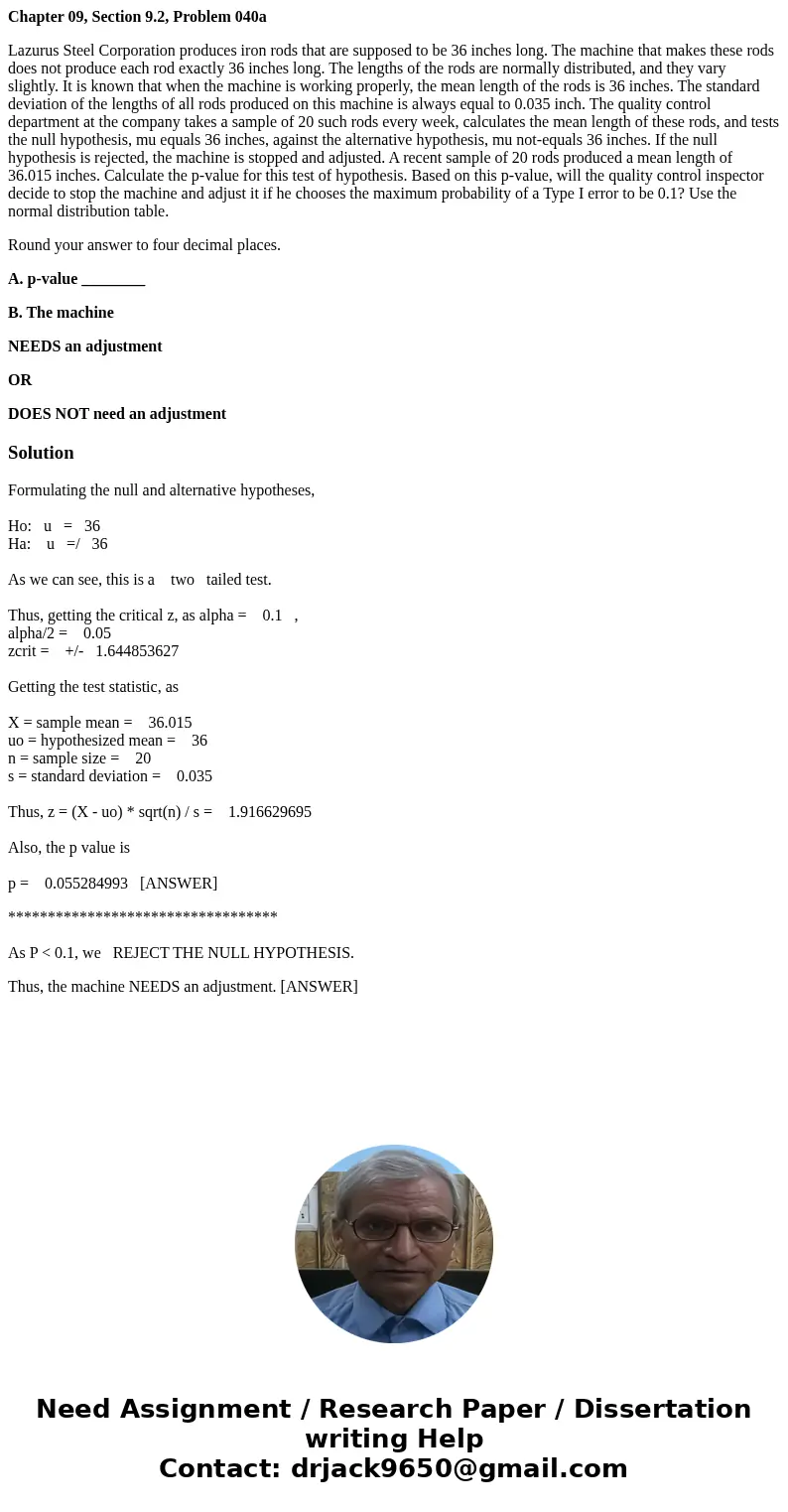Chapter 09 Section 92 Problem 040a Lazurus Steel Corporation
Chapter 09, Section 9.2, Problem 040a
Lazurus Steel Corporation produces iron rods that are supposed to be 36 inches long. The machine that makes these rods does not produce each rod exactly 36 inches long. The lengths of the rods are normally distributed, and they vary slightly. It is known that when the machine is working properly, the mean length of the rods is 36 inches. The standard deviation of the lengths of all rods produced on this machine is always equal to 0.035 inch. The quality control department at the company takes a sample of 20 such rods every week, calculates the mean length of these rods, and tests the null hypothesis, mu equals 36 inches, against the alternative hypothesis, mu not-equals 36 inches. If the null hypothesis is rejected, the machine is stopped and adjusted. A recent sample of 20 rods produced a mean length of 36.015 inches. Calculate the p-value for this test of hypothesis. Based on this p-value, will the quality control inspector decide to stop the machine and adjust it if he chooses the maximum probability of a Type I error to be 0.1? Use the normal distribution table.
Round your answer to four decimal places.
A. p-value ________
B. The machine
NEEDS an adjustment
OR
DOES NOT need an adjustment
Solution
Formulating the null and alternative hypotheses,
Ho: u = 36
Ha: u =/ 36
As we can see, this is a two tailed test.
Thus, getting the critical z, as alpha = 0.1 ,
alpha/2 = 0.05
zcrit = +/- 1.644853627
Getting the test statistic, as
X = sample mean = 36.015
uo = hypothesized mean = 36
n = sample size = 20
s = standard deviation = 0.035
Thus, z = (X - uo) * sqrt(n) / s = 1.916629695
Also, the p value is
p = 0.055284993 [ANSWER]
**********************************
As P < 0.1, we REJECT THE NULL HYPOTHESIS.
Thus, the machine NEEDS an adjustment. [ANSWER]

 Homework Sourse
Homework Sourse